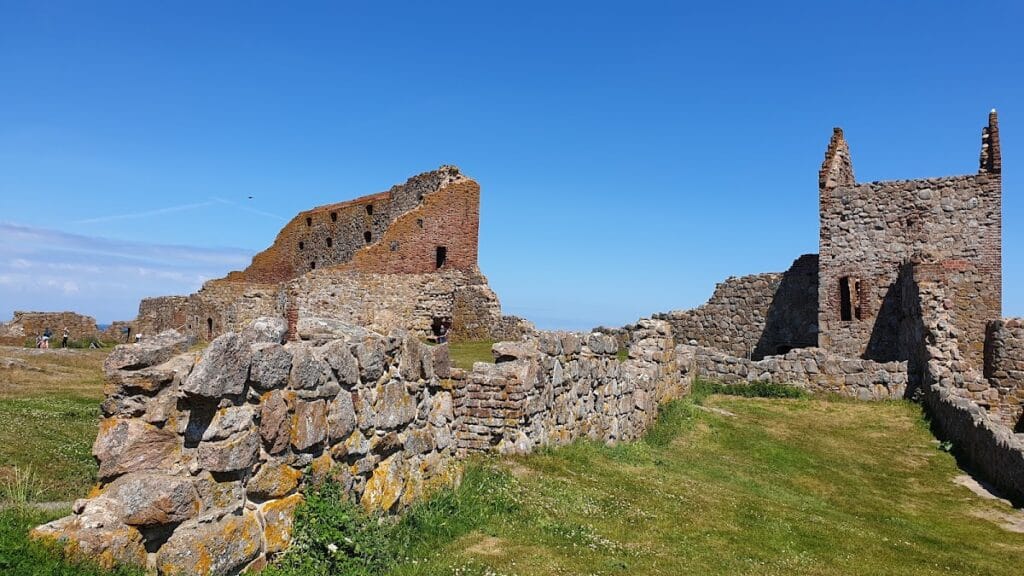Hammershus: A Medieval Fortress on Bornholm Island, Denmark
Visitor Information
Google Rating: 4.6
Popularity: Medium
Google Maps: View on Google Maps
Official Website: www.visitdenmark.com
Country: Denmark
Civilization: Medieval European
Remains: Military
History
Hammershus is a medieval fortress situated on the northwest coast of Bornholm island, within the municipality of Bornholm, Denmark. It was constructed during the early 13th century by the archbishopric of Lund, likely expanded significantly under Archbishop Jakob Erlandsen. The castle began as a fortified refuge and soon became a key stronghold in the ongoing conflicts between Danish monarchs and the archbishops of Lund.
Throughout the 13th and 14th centuries, Hammershus was a focal point in power struggles. It was seized by King Erik V Klipping in 1265 but returned to church control by 1276. In 1319, the fortress was captured by Ludvig Albertsen Eberstein, a marshal under King Erik VI Menved. After enduring a prolonged siege lasting sixteen months between 1324 and 1325, King Valdemar Atterdag gained control, although the castle soon reverted to the archbishopric’s hands again. For nearly two centuries thereafter, it remained under ecclesiastical ownership.
The early 16th century brought further turmoil as King Christian II took possession in 1522, holding the imprisoned Bishop Jens Andersen Beldenak within its walls. That same year the fortress fell to Lübeck forces who held Bornholm as security between 1526 and 1576. The Lübeck occupants undertook repairs and expanded the castle’s defenses during this period. In 1576, governance returned to the Danish crown; however, by this time, advances in artillery had diminished the fortress’s military importance, and it was gradually neglected.
The mid-17th century saw Hammershus involved in conflicts with Sweden during two brief occupations in 1645 and 1658. In 1658, local insurgents led by Villum Clausen assassinated the Swedish governor Johan Printzensköld at the fortress, facilitating Bornholm’s restoration to Danish rule.
From the late 1500s onward, Hammershus served as a state prison. Notably, it confined figures such as Corfitz Ulfeldt and Leonora Christina Ulfeldt in 1660, and from 1719 to 1724, the German alchemist Johann Conrad Dippel was also held there. The fortress ceased to function as a prison by 1743, after which it was used as a source of building stone. Recognition of its historical value led to royal protection in 1822, and preservation efforts commenced in 1990 to stabilize the ruins.
Remains
Hammershus is located atop a rocky promontory rising approximately 74 meters above sea level, offering natural defenses along its rugged coastline on Bornholm’s northwest edge. The fortress extends over roughly 35,000 square meters, enclosed by walls stretching about 750 meters, and divided into a central castle complex and two outer bailey courtyards, all fortified by multiple defensive rings.
Constructed primarily from stone, the fortress incorporates heavy walls designed to exploit the terrain’s natural steep cliffs facing the sea, with rough rocky ground protecting the other sides. A moat crossed by a curved bridge enhanced access defense by forcing attackers into a narrow approach. Within the northwest corner, two natural ponds likely functioned as a fresh water supply for the castle’s inhabitants.
Central to the complex is the main keep, featuring the Manteltårnet or mantle tower, a robust structure commissioned by Bernt Knop in later fortification efforts. This tower played a decisive role in resisting Swedish naval attacks in 1645. The inner courtyard, known as slotsgården, once housed essential buildings such as storerooms, stables, and living quarters for the castle’s household, all surrounded by an inner defensive wall.
Defensive towers equipped with artillery cannons were strategically positioned at the castle’s corners to provide comprehensive protection along the walls. Over time, the fortress underwent repairs and expansions, particularly during the Lübeck occupation in the 16th century, which reinforced its defenses.
Although no longer serving military functions, the ruins preserve their dramatic character, reflecting the fortress’s past importance. Current restoration efforts have focused on maintaining the structure’s historic appearance from the mid-18th century without complete reconstruction. Adjacent to the ruins, a visitor center designed by Christoffer Harlang and Arkitema Architects was established in 2018, providing a complementary setting to the preserved remains.






